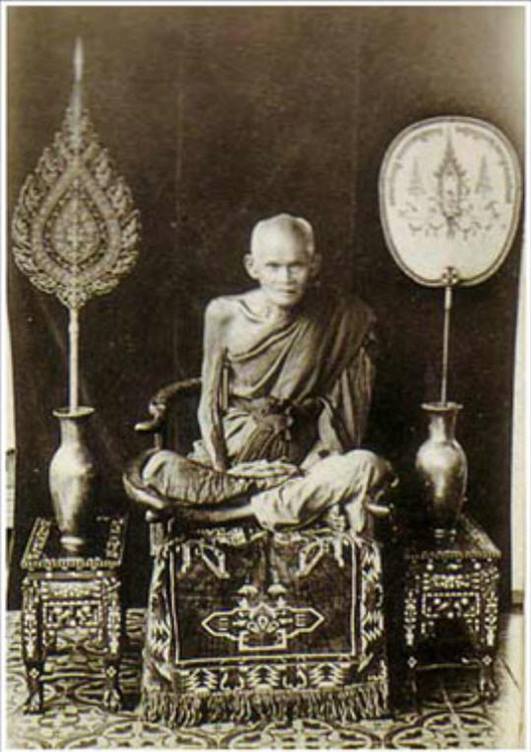Phra Phutthawithinayok (Luang Pu Boon Khanthachoti), born July 3, 1848, in Samut Sakhon Province, is celebrated for his strict spiritual practice and compassion.
From a young age, he exhibited a deep sense of morality and was sensitive to animal welfare, abstaining from harming animals, which was rare for children of that time. He was ordained as a monk at 22 at Wat Klang Bang Kaew, under Phra Palat Pan and Phra Palat Thong, who taught him meditation, Buddhist magic, and ethical conduct.
In 1886, he became abbot of Wat Klang Bang Kaew, where he expanded his knowledge, influencing the region’s spiritual landscape.
He created revered amulets like the Chao Sua and Bia Gae, known for their alleged healing and protection properties. His legacy of amulets and teachings is credited with attracting prosperity, good health, and a compassionate nature.
Luang Pu’s authority in the Buddhist community grew rapidly. In 1888, he was appointed as a presiding monk, and by 1916 he held the title of Phra Khru Uttarakarnbodi, eventually becoming District Sangha Chief in Nakhon Pathom and Suphan Buri provinces.
Known for his powerful presence, he maintained strict temple conduct and discouraged immodest dress at the temple, reinforcing traditional Buddhist principles and respect.
Later in life, he took an honorary title due to age-related health issues, officially retiring from administration in 1931 but continued religious work. Until his death on March 30, 1935, at 89, he actively supported temple growth, serving both monks and laypeople.
His legacy continues to shape Buddhist practices in Thailand, particularly through the virtues and teachings associated with his amulets, respected for their reputed ability to transform misfortune and ward off harm.
The Provincial Administrative Organization of Nakhon Pathom and local devotees honor his contributions, marking his legacy as one of enduring spiritual influence and compassion in Thai Buddhism.
